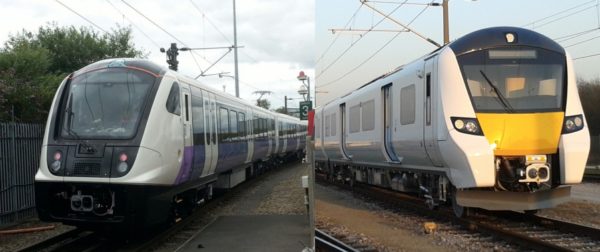The New Champlain Bridge – Barely Built for Rail
September 9th, 2016 by ant6n
An investigation into how the New Champlain Bridge is being built for only very light railway axle loads, and how this would make it difficult to build an integrated regional rail system shared between REM, AMT and VIA, but not impossible.
One issue regarding the REM light metro project that has come up during the BAPE hearings, and that has come up in the
news several
times, is the one of sharing the Mont-Royal tunnel.
The Caisse intends to
privatize the tunnel and monopolize it, although the Mascouche and St-Jerome line of the AMT, and VIA rail need to access it. VIA rail needs access the tunnel for its proposed
high frequency train between Quebec City and Montreal – the routing via the North Shore and Trois-Riviere is 45 minutes faster, and has more population along the way.
The refusal of the Caisse to design a shared system between the REM, VIA and the AMT is probably the main issue, which also informs most of the concerns related to privatization.
One of the issues for for a compatible system is the change of the electrification from 25KV to 1.5KV. The former is usually used on mainlines and on regional and commuter rail systems, the latter on metro systems.
25kv vs 1.5kv Railway Electrification
25KV provides more power, and due to the higher voltage there are less resistive losses. This means substations, the equipment buildings along the line that feed electricity into it, can be further apart. Fewer substations is great for a system involving large distances. So most long distance, regional and commuter rail systems use or will use 25Kv electrification (including VIA).
However, 25kv electrification also requires heavier transformers on the trains that convert the power to be used by the motors, so the trains were historically heavier.
The Deux-Montagnes line was actually converted in the 90s from 1.5KV to 25kv, and new, more powerful trains were ordered, the
MR-90 railcars. Back then, this project cost 300M$. We are now reverting the electrification back, although we don’t know the expense for that.
When I asked the REM people about the reason for changing the electrification, they told me that “1.5KV is more appropriate for a light rail system”, and that trains using it are lighter. They also told me that the weight of the trains is a big concern, due to the low allowed axle weights on the Champlain bridge, which is built to light rail standards.
They said you that you couldn’t just extend the existing Deux-Montagnes line with its MR-90 vehicles onto the Champlain bridge because they are too heavy.
This seems strange. We’re building a new rail bridge that’s still under construction; and there are already weight concerns?
Rail Weights in the Specification of the Champlain Bridge
I decided to investigate the issue. What are the exact weight requirements on the Champlain bridge?
I e-mailed
the New Champlain Bridge to ask about rail axle weights. They forwarded my request to Infrastructure Canada, which pointed me to the Project Agreement between the Canadian Government and the
“Signature on the Saint Lawrence Group”, a consortium of SNC-Lavalin and others to build the Champlain bridge.
This is a giant document, provided as a collection of pdf files in English and French, which come in a
175MB zip file. Infrastructure Canada pointed me to Schedule 7, Part 7, Section 4.2.3.3. It reads:
For the SLR phase (as defined in Section 4.1.1 herein) the live loads shall be taken as rail traffic in accordance with EN 1991-2: Eurocode 1- Actions on structures – Part 2: Traffic loads on bridges
. Section 6 of the Eurocode together with the Project-specific application rules contained in this Agreement shall be considered applicable for SLR loading.
The structure shall be verified for both Load Model 71 and Load Model SW/0. Classified vertical loads shall be applied. The factor alpha referred to in Clause 6.3.2 (3) of the Eurocode shall be taken as 0.50 and shall be applied to both load models except that the classified value of the axle load Qvk to be used in Load Model 71 shall be taken as 146 kN.
This sounds good! The railway is defined according to a standard, a European one on top of that! They know how to build trains, right? But we still don’t really know what the actual weight requirement is. So the search continues, now for what this
“EN 1991-2” specification is, what the
“Load Model 71” and
“Load Model SW/0” are, and how those
alpha and
QvKvalues fit into that.





